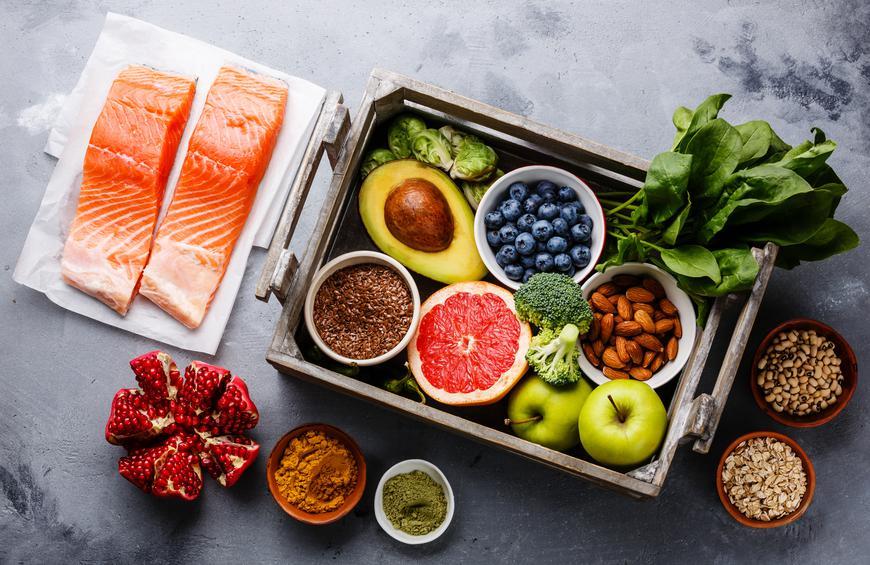After the bestseller “Eat: chronicles of a wild animal in the food jungle”, Gilles Lartigot offers us a sequel, warmly out of the steamer (and not the microwave) . What is this new opus worth?
The shape of Eat 2
First of all, I wanted to talk about the overall aspect of this book, both in terms of the title and the layout, which you can see on the surface. ” Eat 2: Of The Living And The Dead “, a title that is as intriguing as it is disturbing. That said, we are starting to get to know the character, Gilles Lartigot is not in the lace and does not beat around the bush.
In Eat and Eat 2, the priority is information. Whether easy or difficult to hear, it is always described in an objective and straightforward manner. This is what really makes these books so strong, and you can feel it immediately when you discover the cover , back and back cover.
Gilles Lartigot took over the codes from Eat. Her entire face is on the cover, a face on a human scale. But there is still a glaring difference in Eat 2: the gaze is directed towards the hands that are joined, the color code changes to black and white. The tone is set: this sequel seems much more threatening and mysterious.
In Eat, a knife is present in front of Gilles Lartigot’s face, and the blade of this knife shines when the book is tilted. A technique that makes the knife palpable and which visually gives it great importance depending on the angle with which you look at the work.
In Eat 2, the shiny knife is replaced by a matte-colored cross, which fits over the eyes and appears to be held between the two joined hands. An extremely powerful process which, associated with the black + white duotone, strengthens the link with death mentioned in the title.
Finally, in Eat, the word “Eat” was placed on the mouth of Gilles Lartigot. It is found here at the bottom of the cover, perhaps to convey that food will not be the only subject of the book. We also understand it with the choice of the title, we go from “chronicles of a wild animal in the food jungle” to “chronicles of a toxic society”. The subject goes from the wild animal to society.
Either way, it’s hard not to be tempted to explore the content of these pages. We expect dark, we expect something powerful. No more appetizers, let’s go to the main course.
The background of Eat 2
Let’s say it right now, the resemblance to Eat ends here. Gilles Lartigot did not give us a certified copy. The term Eat is used in Eat 2, but here we swallow the pill in a different way (no pun intended on dietary supplements), of course keeping the main frame of the diet.
After having mainly lifted the veil on the way in which farm animals are raised and killed and proposed solutions to find a qualitative diet in Eat, Gilles Lartigot hangs on his hunting table the industry health, especially the huge conflicts of interest that are linked to cancer.
The information given in this passage is simply mind-blowing, both in terms of screening protocols and the way in which cancers are treated in France. The older ones pull the strings, we suspected. But in the cancer industry, puppets are blindfolded, in the void, and strings are twigs. The link is then made with food, which will positively or negatively influence the onset of the disease.
The heart of the book reflects Gilles Lartigot’s favorite theme, food. An interview with Dr Jérôme Bernard-Pellet allows us to understand how to approach a vegan diet and why the lobbies make sure to discredit plant food. “There is a real will to harm soybeans with the most dishonest arguments. “
There is also a section that describes what Geoffrey Le Guilcher witnessed in his book ” Steak Machine “. This journalist spent 6 weeks undercover in a slaughterhouse and reviews some of the most horrific anecdotes he has witnessed. A passage hard to read but necessary.
Finally, the last big part, the resilience part. Gilles Lartigot is realistic: “… It is never easy to go against the grain of mainstream thought. ” I think this part is extremely important to him and he needed to talk about it. Here we learn what the term survivalism means, which is too often misunderstood.
One thinks of locking oneself in a bunker with provisions awaiting the 3rd world war, when it is more about independence, of taking back power over society. Learn a foreign language, a second job… These direct actions are the advice given by Vol West, a survivor professional.
Beyond physical (material) independence, Gilles Lartigot especially shares with us how to acquire intellectual independence. The fact of opening Eat 2 and devouring its lines is the typical example: reading is a great way to learn, to build a healthy intellectual capital and free from this abundance of futile information given by television, of those empty neural calories served by today’s shows.
Eat 1 gave us physical food, Eat 2 adds intellectual and emotional food (I remember you m ‘had mentioned Gilles, this concept stuck in my head).
What is important to understand in Eat and Eat 2 is that Gilles Lartigot does not position himself as a guru. He takes the care (and the time) to read and then interview some of the top experts in their respective fields to analyze the situation and take stock. This is why his approach is well founded. He doesn’t just read and gather information, he confronts his critical mind with that of the experts by asking his own questions.
The passing of time
There is a notion that particularly marked me in Eat 2 , it is awareness of the passage of time, the fact that in our society everything is accelerating. Life is short, but can pass even faster if you step on the accelerator more or less hard (by eating the wrong way and spending your free time in front of the TV, for example).
The timeline of Eat 2 is special because it is in order in substance and reversed in form. Basically, that is to say in the text, we start with birth and end with death. The first photo used after the introduction is of a newborn baby. The last photo used is that of Gilles Lartigot, from behind, in a church, accompanied by a post-mortem text.
In form, it’s the other way around, we start with death and end with life. Behind the blanket, the word “DEATH” appears in large size, with links of a chain underneath. At the end of the book, we have the complete opposite for these two elements: the word “ALIVE” and the keys to get rid of the chain at the beginning of the book, this chain with which society imprisons us.
The string, the keys. The problem, the solutions. In between, the method. In short, “No pain, no gain” (no effort, no results). The message may be as follows: make sure you leave by leaving life behind, stepping out of your comfort zone to find solutions in order to make physical and intellectual independence flourish. Well done Gilles. I have new questions for you.




